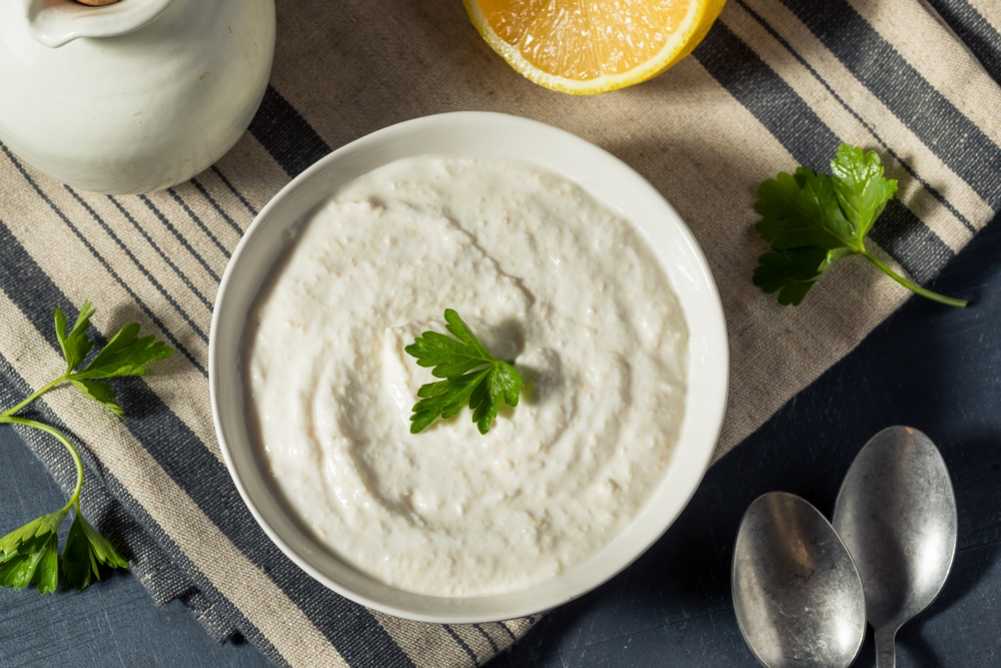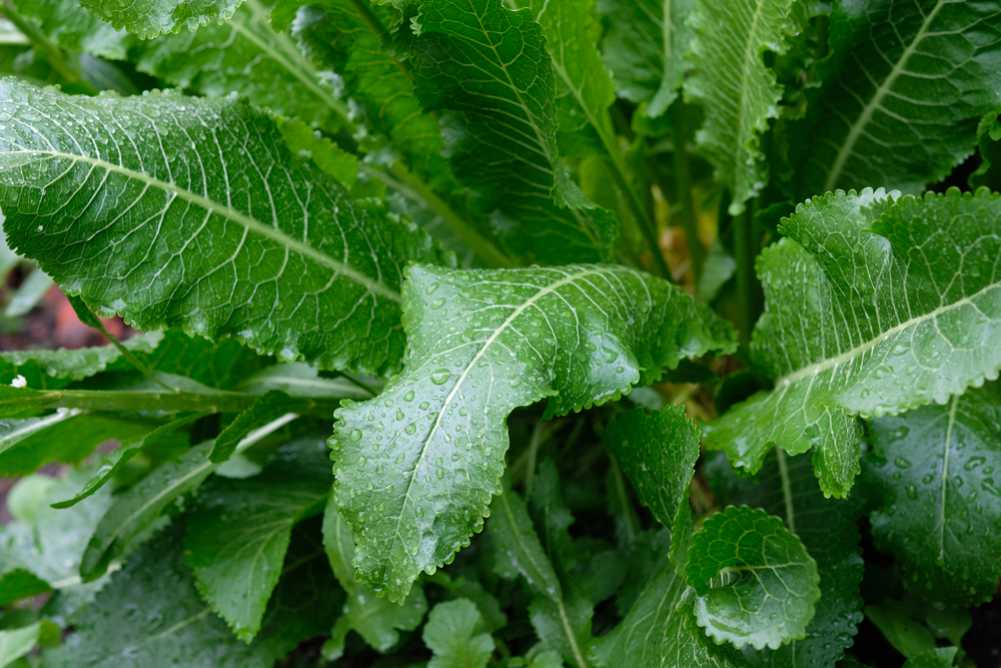
Also receive the Almanac Daily newsletter including gardening tips, weather, astronomical events, and more.
Planting, Growing, and Harvesting Horseradish
Cooking Notes
Preparing Horseradish for Use as a Condiment
Peel the root and finely grate it, or cut it into cubes and place the horseradish cubes into a blender. Add one or two ice cubes and grind the horseradish until smooth. (Make sure you do this in a well-ventilated room and use eye and nose protection. The smell will be quite pungent.)
Add 1 to 2 tablespoons of white vinegar and a few pinches of salt immediately for mild horseradish. For hot and spicy horseradish, wait 3 minutes before adding 1 to 2 tablespoons of white vinegar and a few pinches of salt.

Photo Credit: Brent Hofacker/Shutterstock
ADVERTISEMENT
Horseradish grows interesting. I transplanted some near a dairy barn in northern VT. It took hold and spread. A farmer plowed up the field and thru the horseradish I planted, The following years, I see the horseradish had spread around the field. It regrew on it's own. The farmer keeps plowing, the horseradish keeps spreading. When the field is hayed, the cows must like it in the winter months. I transplanted about 14 plants to a different place, quite wet and it didn't grow as well, maybe 2 plants survived. Love the stuff, dangerous when processing, the strong smells.
I learned to process it on a outside table with the wind at my back. It works!
Prefer straight horse radish sauce, not the creamed sort. Suggestion: try the sauce lightly stirred into mashed potato, lovely.
Be careful where you plant it. You will never be able to get rid of it out of bed. One small tap root left in the ground and it will come back every year.
My mother-in-law harvested horseradish and said should be harvested during certain months. It was either during months with an r in them or without an r in them. I don’t remember which it was. Is that true?
Months with a r
I was told the harvest should be in the month ending in our. So that would be October November and December. I have dug my horseradish in January and February as well though.
I see photos of horseradish roots that appear to be two inches across. My roots are mostly only the size of a pencil or maybe my finger. How do I get larger roots?
Hello I have a question I hope you can answer. This is my first year and I just planted my horseradish a month ago. We live in Ontario Canada and winter is fast approaching us. So my question is can I leave my plant in the ground for the winter? Or will this hurt the plant?
I can't grow horseradish here in Florida; too warm. But, when I lived in the state of Maryland, I planted a single piece of horseradish left over from my Passover Seder Plate. I just dug a small hole and covered it over... Much to my surprise, by the time the bush was about 3 feet tall, it was covered by the most beautiful white, sweet smelling flowers on every branch... Eventually I dug up 2 pieces of horse-radish in November and had the hottest radish of my life time. Never tried it again, but moved to Florida with little space on my property for any vegetable gardens. Do I ever miss my gardens, but now have lettuce, arugula, radishes and cucumbers growning in the old recycle bins. I am 91 and still planting when necessary.










